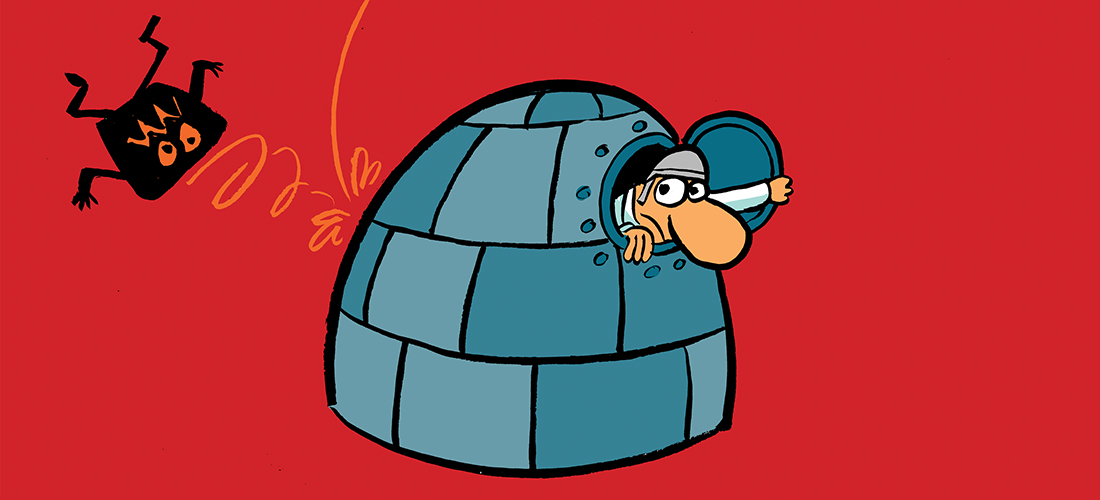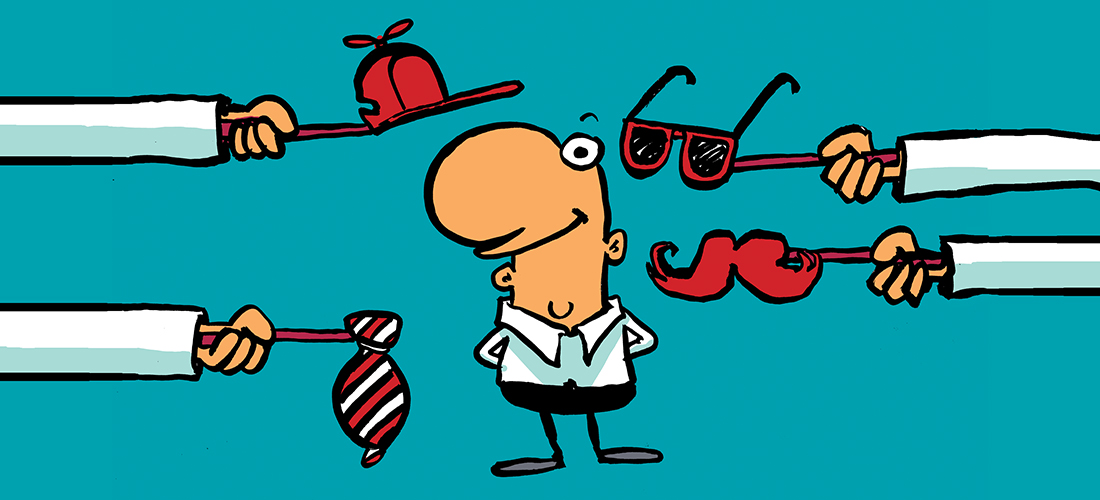I’m often asked questions about which order Exchange Server updates need to be installed in. In fact, I’m asked it so often that I wonder why I haven’t written this FAQ before. So here it is, and hopefully this will provide the information that people need. If you’re looking for more information to understand which versions of Exchange are supported, and why you should keep your servers updated, please refer to my best practices article.
The order that you install Exchange Server updates in will depend on the version of Exchange that you’re referring to. In this article I’ll focus on Exchange 2016, Exchange 2013, and Exchange 2010. Exchange 2007 is going to be fully end of life soon enough, and it’s the same as Exchange 2010 anyway in terms of how updates are managed.
Exchange Server 2016 and 2013
The servicing model for Exchange 2016 and 2013 uses “cumulative updates”. A cumulative update is a complete build of the product that includes all previous updates, not an incremental patch or update.
What you should install for new servers
When you’re installing a new Exchange 2016 or 2013 server, you should install the most recent cumulative update. You can find details of the most recent version of Exchange 2016 and 2013 on the Exchange Server Build Numbers page on TechNet.
You do not need to install the RTM build, or any earlier build, and then upgrade to the latest CU. Again, each CU is a full build of the product.
Note: Exchange Server 2013 has the confusingly named Service Pack 1. Exchange 2013 SP1 is effectively Exchange 2013 CU4. I am calling this out because some customers get confused and think that they should install SP1, and then upgrade to the latest CU. Although SP1 is supported, you should not deploy new servers with SP1 as it is well out of date in terms of features and bug fixes.
How to handle updates for existing servers
Because each CU is a full build of the product and includes all previous updates, you can upgrade from any earlier CU to the latest CU. For example, if you are running Exchange 2013 CU9, you can upgrade to Exchange 2013 CU13 directly. You do not need to install CU10, CU11, and CU12 first.
Updating from any CU to any CU is supported, however to the best of my knowledge Microsoft only tests updates from N-2 builds. For example, when Microsoft released CU13, they would test the update process from CU11 and CU12 as they were the previously supported builds. This means that if you are updating from CU9 to CU13, it’s possible that you’ll encounter a problem that Microsoft has not identified in their testing. Although that risk exists, in my opinion it has diminished over time as the quality of the Exchange 2016/2013 code has improved.
Exchange Server 2010
The servicing model for Exchange 2010 uses service packs and update rollups. A service pack is a complete build of the product that includes all previous updates. An update rollup applies to a specific service pack, and includes all previous updates that were included in previous update rollups for that service pack.
What you should install for new servers
When you’re installing a new Exchange 2010 server, you should install the latest service pack, followed by the latest update rollup for that service pack. You can find details of the most recent service pack and update rollup for Exchange 2010 on the Exchange Server Build Numbers page on TechNet.
How to handle updates for existing servers
The steps for updating Exchange 2010 servers depends on which service pack you’re currently running. If you’re running RTM, SP1, or SP2, you’ll need to install SP3 first, then apply the latest update rollup. You can upgrade to SP3 from any previous version of Exchange 2010. You do not need to install SP1 and SP2 first.
If you’re already running Exchange 2010 SP3, you can just apply the latest update rollup. You can update directly to the latest update rollup. For example, if you’re running SP3 with UR10, you can apply update rollup 14 without installing UR11, UR12, and UR13 first.
Additional Resources:
- Exchange Server Pro Podcast Episode 22: Surviving Exchange Updates, with Andrew Higginbotham
- Updated Guidance for Solving Outdated Exchange Server and .NET Framework Versions
- Exchange Best Practices: Keeping Servers Updated
- Installing Cumulative Updates for Exchange 2016
- Installing Cumulative Updates for Exchange 2013
- Upgrading Exchange 2010 to Service Pack 3
Hopefully this article has answered your questions and concerns about which order you should install Exchange Server updates. If you have any additional questions please post them in the comments below, and if necessary I’ll update this FAQ.




Can we update Exchange 2010 Sp3 Rollup 32 on Rollup 4 ?
Hey Paul, just want to say thanks for the excellent information you continuously provide regarding all things Exchange! For me, if I want to search the Internet for something I open Google.com; if I want to find anything…anything about Exchange I head to practical365.com!
My appreciation and many thanks!
– Joe
Did you fixed the issue?
Hi Paul, right now I had an issue about the update rollup. Currently, I installed exchange server 2010 SP3 in new vm. When i want to upgrade the update rollup, i got some error which is “Setup for Wizard for Update Rollup 30 for Exchange Server 2010 Service Pack 3 (KB4536989) ended prematurely.” Can u help me for this error?
Hi fareth,
have tried to install the previeuse Rollup like the 29 or 28 ?
Hello Paul,
Recently I came across the below details where I see the
ExchangeVersion : 0.1 (8.0.535.0) and
AdminDisplayVersion : Version 14.3 (Build 123.4),
what does this mean? If I research the exchange version, it shows of Exchange 2007 and if I compare the Admin display version, it is Exchange 2010 sp3.
Does this mean cx has upgraded from Exch 2007 to Exch 2010
Hello,
I have 3 Exchange 2010 SP3 Servers with RU 22. I need to install RU26. 1 server for Hub Transport/Client Access and 2 servers for Mailboxes. What’s the order to apply the patch? Hub Transport/Client Access first or either of the 2 mailboxes servers?
Thanks,
Hi, Jonathan,
I just did the update from SP3 directly to Rollup 26.
Duration approx.: 1.5 h
I hope it helps you with that. Tests are excluded.
Greetings
HI —
I have an Exchange 2010 SP3 server currently on rollup 10. I plan to update to the latest rollup (currently 26). Do you know roughly how long the update takes? Obviously it’s somewhat hardware dependent, but does installation time vary based on number of mailboxes or size of mailstores? Is there a forumla (e.g., X minutes for every gig of mailstore size)?
Thanks.
Hi Paul,
I am supporting exchange architecture where we have many server something around 30.
Do you know if there could be any problems when we would install newest roll ups for exchange 2010 for part of them e.g 10 and next ten will be updated during next week ?
I know that different exchange servers could coexistence together so probably such thing also will not cause any issue, just wanted to confirm 🙂
Best Regards
Hey Paul,
I need help installing Exchange 2010 Service Pack 3 on a 2008 R2 server – EHub and DAG.
The problem is, we upgraded our Domain and Forest Levels to 2016 with all 2016 Servers.
The SP3 is failing that it’s looking for a 2003 Domain Controller, well that’s not possible.
Should I demote the forest and domain to 2012 add a 2012 domain controller and try to install again?
I see a few different posts saying the Exch2010 SP3 RU22 supports 2012 Active Directory but I am assuming I need to get SP3 installed before I can get the RU22 installed?
Any recommendations?
Hi Paul,
I am in the process of upgrading single exchange 2010 server with SP3 to exchange 2016. What can I do if I missed Update rollup 11 for exchange 2010 SP3 and Exchange 2016 is already introduced in the organisation? Thank you in advance.
hi there, if running exchange 2010 sp1 ( dont shoot me) in a distributed architecture model. ie;multiple cas, database, transporter services.
can i upgrade internet facing CAS to SP3 then again to UR22, _then_ move on to the other cas boxes etc?
thanks
Paul
Have a 2013 CU7 I inherited no documentation or predecessors to fact find. Planning to jump right to CU19 or CU20 in sandbox. I’ve researched many threads like this one. Many say making a big jump is okay. The sandbox only has Exchange restored to it. Should I restore an AD in the sandbox also?
Thanks in advance.
Exchange won’t work at all without AD, so yes.
Hi Paul
I have an environment where the administrators have tried to update Exchange RTM 2010 to SP3 and SP2 with the updates failing every time and the exchange needing to be restored from backup.
What would you recommend in the approach to a successful update? Would copying an AD box and the exchange to a virtual sanbox be viable for none live update testing?
Thanks for any info
Sandbox texting might give you some clues, but if you’ve got a server that’s failing upgrades like that, then another approach would be to build a new server and migrate mailboxes and services to it.
Thank for all the great articles Paul.
I have four Exchange 2016 CU2 servers in a DAG. I upgraded server4 to CU4, .Net and then to CU5. Now it seems like server4 no longer sends client requests to the other three servers. I can’t find any errors in any event viewer or logs. From looking at logs it does seem like there is a definite absence of traffic from server4 on the other three servers. It was migrated from Exchange 2010 a long time ago. Could it be an old setting?
Thanks!!!
That’s a fairly vague problem description, so I would only suggest to start with the basics – is your load balancer sending traffic to that server? Is the server still in maintenance mode from the upgrades? Do the other servers have active database copies?
I can’t think of any reason why any legacy 2010 remnants would suddenly cause a problem.
All that said, if you’ve only upgraded as far as CU5 that is well behind the current release of Exchange 2016 and you should upgrade to the latest CU.
Paul,
We’re preparing to move most of our email service from Exchange 2010 on premises to Office 365 in a hybrid deployment. (Enjoying “Office 365 for IT Pros”, BTW)
Currently we have a 2 server DAG and 1 mailbox-only server, all 2010 SP3, with no rollups. So I’m planning to install RU18, and just want to check my approach.
1) Update the mailbox only server
2) Update the inactive DAG member
3) Move the active DB’s
4) Update the other DAG member
5) Move the active DB’s back to their preferred host
6) Call it a day
Sound right?
Hi, I am preparing for migration form Exchange 2013 to Exchange 2016. In my environment I have Exchange 2013 with CU10. Can I install Exchange 2016 CU4 and after that install CU15 for Exchange 2013?
Before introducing a new version of Exchange to the org I always recommend to upgrade existing servers to a supported build.
After I install the latest 2010 SP3 UR17, should I uninstall 2010 SP3 UR13 or just leave it?
Just leave it.
Cheers mate
Hi
I have exchange 2010 sp3 running without any roll up,
can i update latest roll up CU15 directly..?
Yes.
I have exchange 2010 CU8, can i install CU15 directly ?
Som,
As stated earlier in the comment threads here, “A cumulative update is a complete build of the product that includes all previous updates, not an incremental patch or update.”
– Kyle
I*m new in Exchangen administration.
We have 1 Exchangen 2010 SP3 UR 5.
How can I update the best?
Christof,
Don’t know if you still need an answer or not, but as long as your Exchange 2010 SP3, you can update to any UR version past 5 without needing to install the additional ones. We are on 2010 SP3 UR 5, and I just bumped them to UR 15. The UR’s contain all the previous information the other UR’s in them.
– Kyle
I installed Exchange 2010 Sp3 Ru14 was previously on RU8. There is suppose to have been a S/MIME update in RU13. RU14 doesn’t appear to update S/MIME. Anyone seen this issue before ?
Hi paul,
Hope you do great.
I’m also one of the beginner in exchange environment. I have a newly installed exchange server 2016 with no CU installed. It is ok to install CU2 without installing CU1?
Appreciate your response.
Thank you,
Regards,
Rommel
Rommel,
I started as an Exchange Admin with absolutely no experience or training a year and a half ago. When I was stuck on something, I always found myself back at exchangeserverpro. Most of the time you can just search Google then put exchangeserverpro somewhere in the search and Paul will already have an article about it. For example: exchangeserverpro what order to install cumulative updates.
This is an article he has that will answer your question:
https://www.practical365.com/faq-order-install-service-packs-update-rollups-cumulative-updates/
Quote from article “A cumulative update is a complete build of the product that includes all previous updates, not an incremental patch or update.”
I had issues with a roll up deployment once. While installing the roll up, all the services just stopped. They wouldn’t restart after a reboot, so I had to go in and start them manually. I’ve had successful installs since, but I get a little paranoid every patch night. Anyone else have services stop after installing a roll up?
I’m a little new to the intricacies of Exchange messaging services and I am also responsible for installing windows updates to all the computers on our network. I use a WSUS system to control the updates and limit the bandwidth to the internet.
Now what I need to understand is:
Do the cumulative updates for Exchange include the Server updates for the operating system? Do I still need to install windows updates to the Exchange servers or just the cumulative updates?
Thank you for the article. I found it very informative and I look forward to your next article.
Dean
Exchange updates only contain Exchange code. No Windows patches.
Great details, Paul. The other commonly asked question in regards to any update is “Where do I start?”
We’ve always deployed updates (SPs, RUs) in an “outside -> in” perspective, by role.
Maybe that can be articulated to make this FAQ more expansive?